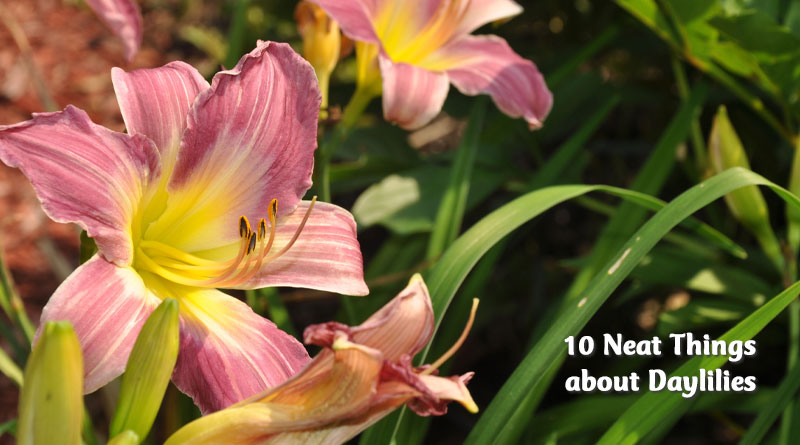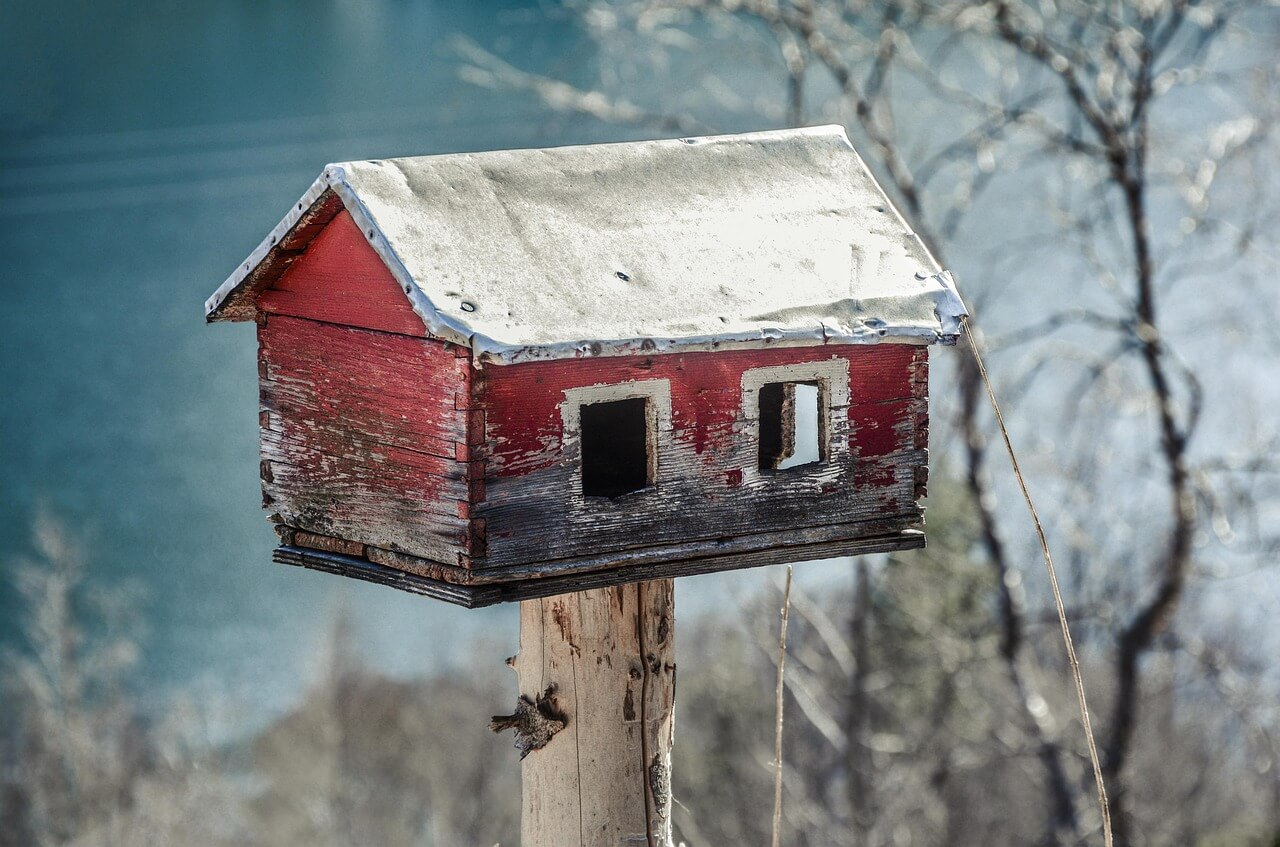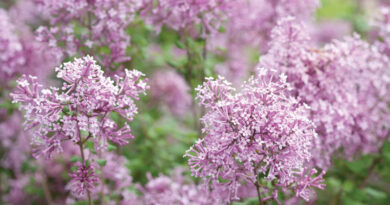About Daylilies
1. The “perfect perennial”.

Daylilies are often called the perfect perennial because they are easy to grow, come in many varieties (60,000 named and registered cultivars), are drought tolerant, have few pest and disease problems, tolerate all kinds of soil and light conditions and bloom from late spring until fall. Some put out 200 to 400 blooms in a season and others re-bloom (like ‘Stella D’Oro’). Daylilies will bloom 30 to 40 days in a row.
2. Daylily dictionary.
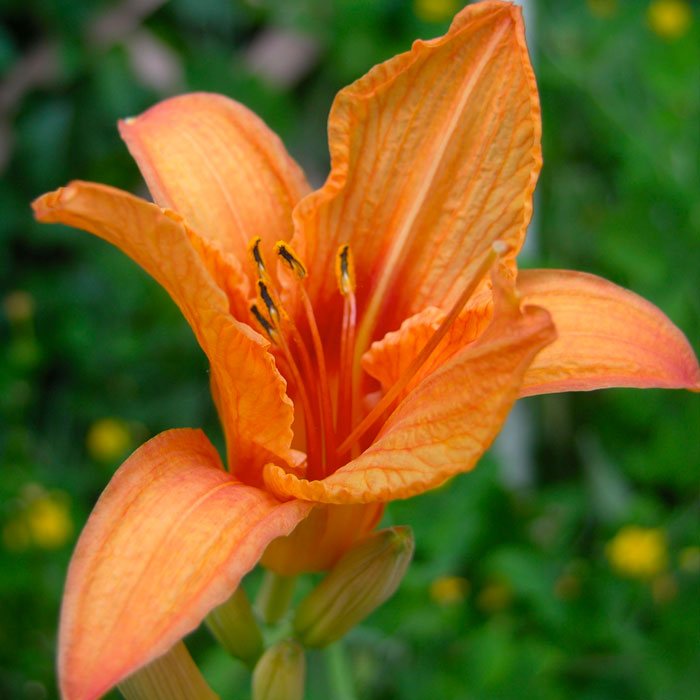
The American Hemerocallis Society (Hemerocallis is Latin for daylily) has created a daylily dictionary containing over 300 terms to deal with all the ways that have been created to describe the many variations of this wonderful plant. Look up any term here: https://daylilies.org/daylily-dictionary/
3. Beautiful lily.
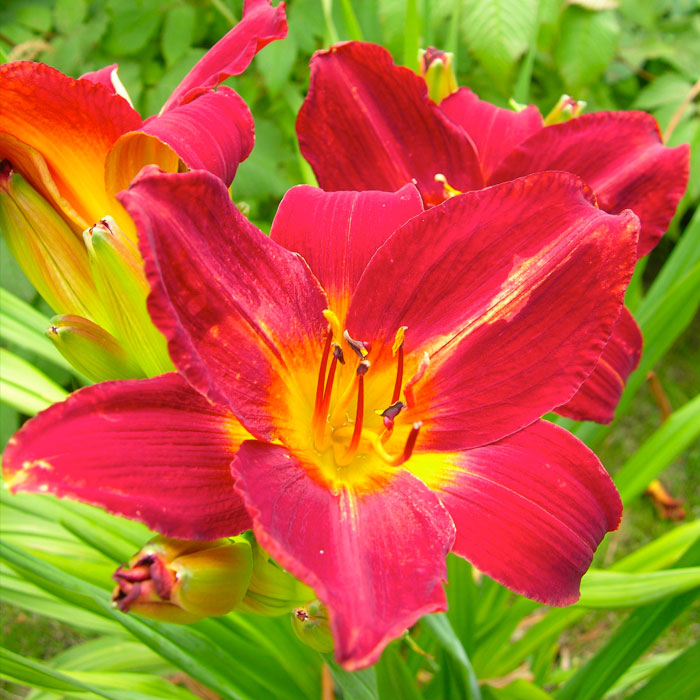
Hemerocallis, the botanical name for daylily, is taken from the Greek. Hemero means day and kallos means beautiful. It is not a lily, although its roots are sometimes almost bulbous, thickened to accommodate water storage. Roots can also be fibrous or cord-like.
4. Diploid or tetraploid.
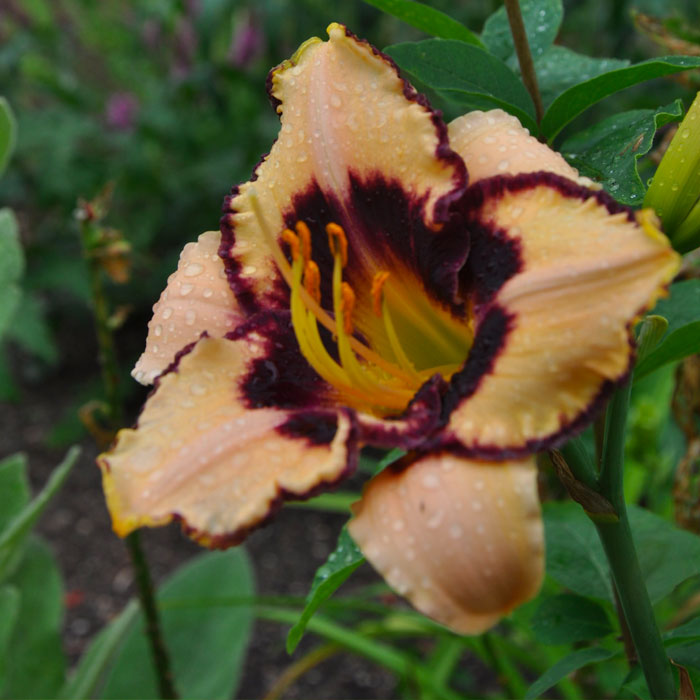
Daylily aficionados often use the terms “diploid” or “tetraploid” to describe the different kinds of plant. Diploid refers to a plant with two separate sets of chromosomes. Diploids have 11 chromosomes from the egg cell and 11 from the sperm cells of its pollen which means that one set is inherited from each parent. Tetraploids have four sets or 44 chromosomes. You probably don’t give a hoot about this except to note that tetraploids often have larger blooms and diploids often display the prettiest pinks.
5. Nightbloomer.
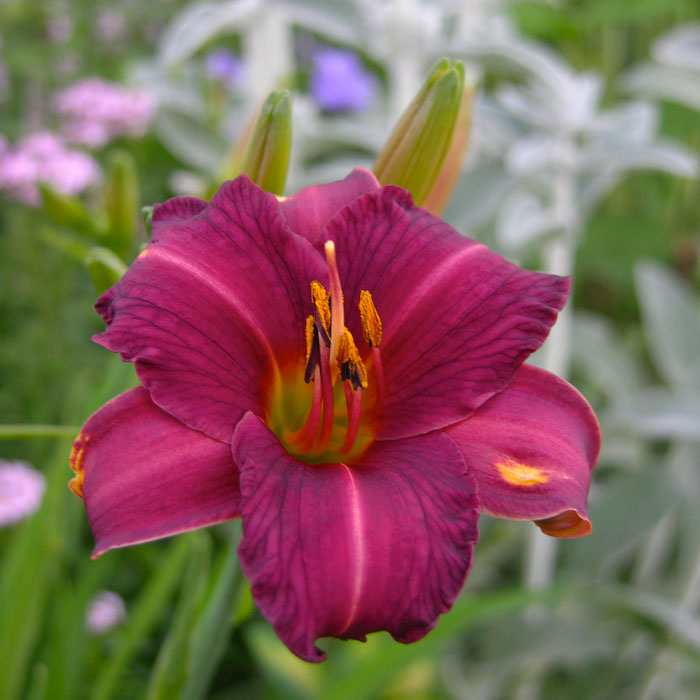
If a daylily blooms at night, is it a nightlily? Well, no, but some daylilies do open in the evening and last through the night until the following evening. These daylilies are often highly fragrant.
6. That floozy, fulva.
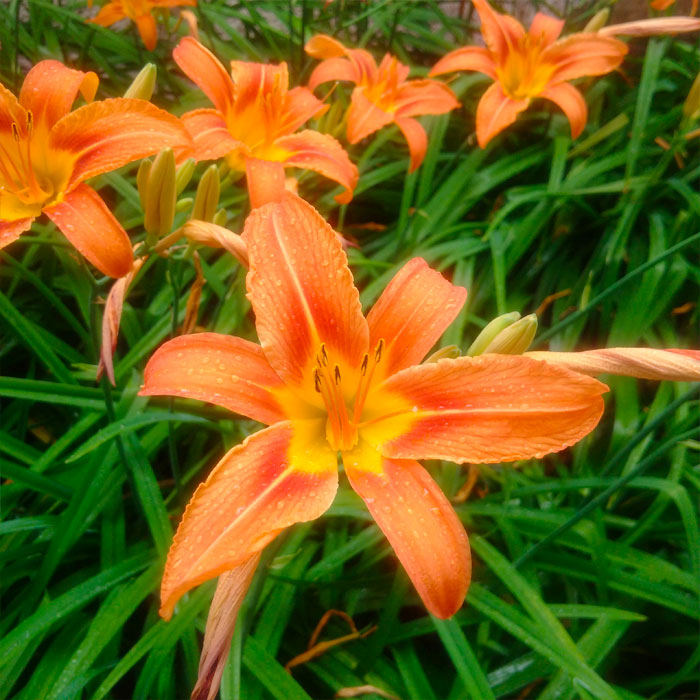
Most daylilies are well behaved, growing into ever larger clumps until you get around to dividing them. Not so with Hemerocallis fulva. She wanders and leaves her offspring all over the place. Fulva refers to her tawny orange colour. This is a very invasive daylily that moves via underground rhizomes. Beware of daylily donations because you might be getting more than you bargained for.
7. The proliferation.
Some daylilies produce a little plantlet at the juncture of the flower scape and a flower branch. This is called a proliferation. It can be planted to produce a daylily clone. It will bloom within two years of planting. Check it out here -> https://daylilies.org/daylily-dictionary/proliferation/
8. Pleasing your daylily.
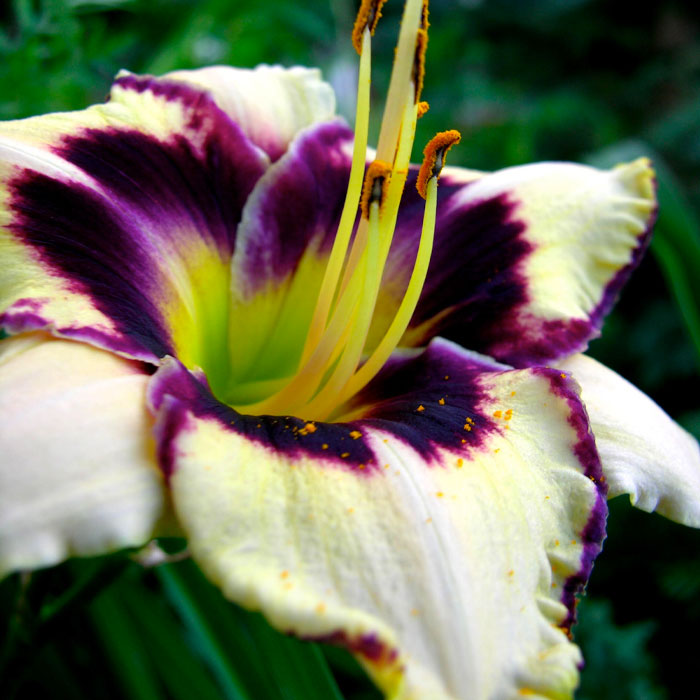
Daylilies prefer slightly acidic soil, although they are not fussy. The paler flowers should get full sun to bring out their best hues and tints. The dark daylilies, the deep reds and almost-blacks, need part shade, especially during the hottest part of the day as their intense colour absorbs sunlight which can burn the petals. Although they are drought tolerant, they enjoy a reasonable amount of water and if you plant them in competition with tree roots, be sure to give them ample moisture.
9. Petal perfect.
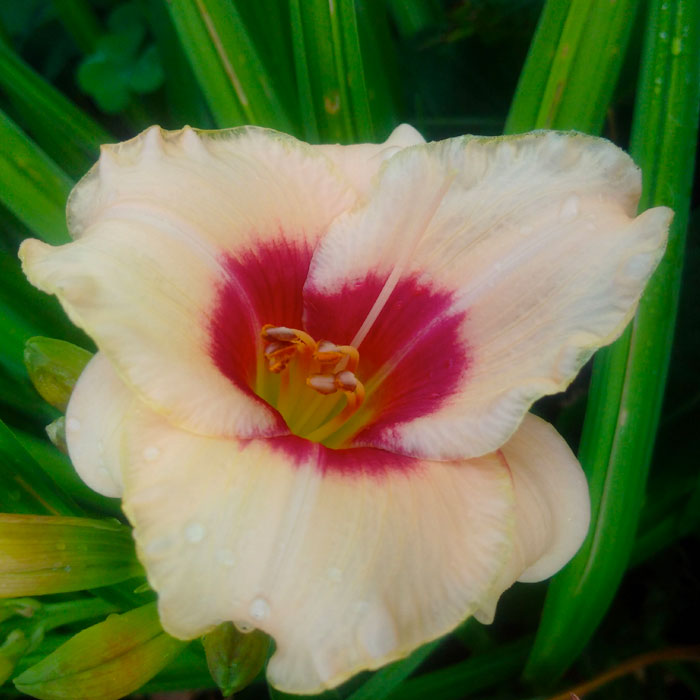
Basic daylilies have three petals and three sepals, together referred to as tepals. In the daylily world, though, the variations on this simple design are endless. Petals can be curved, spidery, round, ruffled, or doubled. They can be banded, haloed, watermarked, edged, picoteed, tipped, dotted dusted, flecked… see why they need their own dictionary? Some petals are diamond dusted, their petals containing tiny crystals that give off a sparkly appearance in sunlight. Their throats may be yellow or green, golden or apricot.
10. Divide and proliferate.
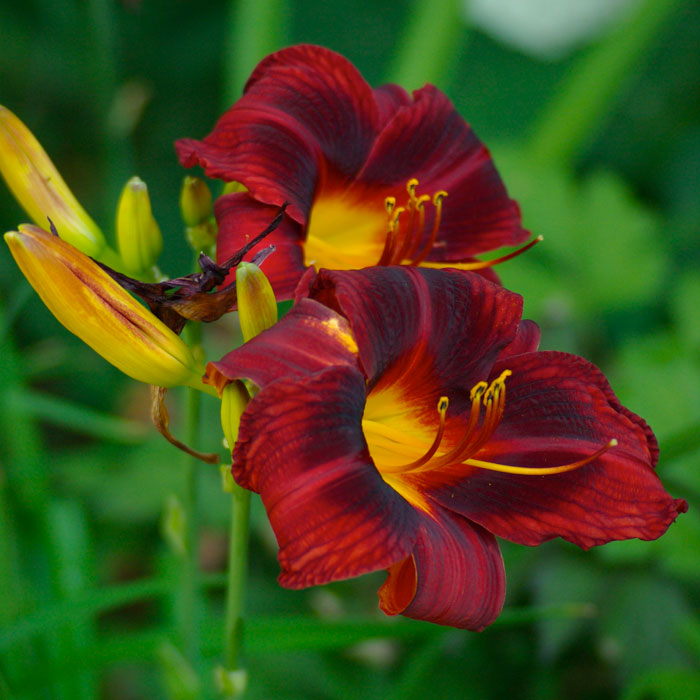
Divide in springtime when you first see growth. They are not delicate so just cut them apart and replant the results. They may sulk for a year before blooming again but be patient. You can get a lot of plants out of a four-year-old clump. Despite this, not all daylilies are a dime-a-dozen, although you can probably buy one for about six bucks. However, you can also splurge and get a really rare new hybrid for $500, too.
– Dorothy Dobbie Copyright©
Pegasus Publications Inc.



